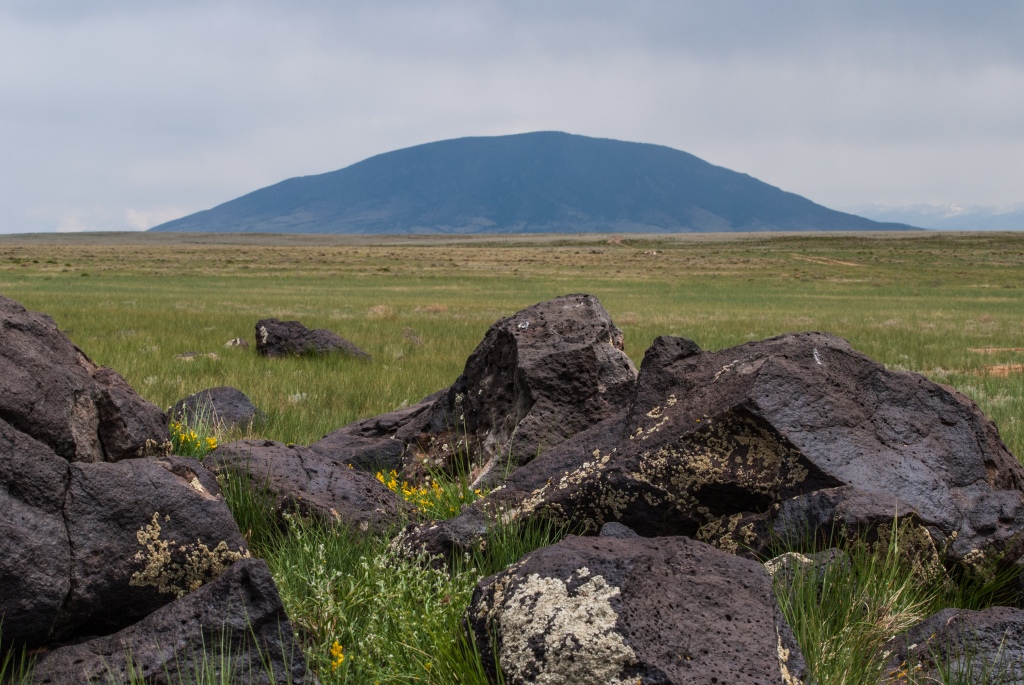
Years of grassroots advocacy by local stakeholders – including Taos Pueblo leadership, land grant heirs, acequia parciantes and mayordomos, local businesses, elected officials, grazing permittees and others – in northern New Mexico paid off in May 2013 when President Barack Obama used his authority under the Antiquities Act to establish the Rio Grande del Norte National Monument.
This impressive landscape comprising more than 240,000 acres in Taos and Rio Arriba Counties is just one New Mexico beneficiary of the Land and Water Conservation Fund (LWCF), often referred to as the nation’s most successful conservation program. Since LWCF was implemented in 1964, the program has funded conservation and restoration projects in every New Mexico county.
While Congress has never approved full funding for LWCF, New Mexico Wild continues to work in concert with New Mexico’s Congressional delegation to secure full and permanent funding for the program so future generations of Americans can enjoy the serenity and opportunities for recreation that special places like Rio Grande del Norte provide.
New Mexico’s entire Congressional delegation – Senators Tom Udall and Martin Heinrich; Congressman Ben Ray Lujan; and Congresswomen Deb Haaland and Xochitl Torres Small – were instrumental in successful efforts to pass a federal public lands package in March 2019 that, among other things, established two new Wilderness Areas within the boundaries of Rio Grande del Norte National Monument: the Cerro del Yuta and Rio San Antonio Wilderness Areas.
Cerro del Yuta Wilderness

The centerpiece of Cerro del Yuta is Ute Mountain – a 10,000-foot-high volcanic cone that rises more than 2,600 feet above the surrounding plain and overlooks the Taos Gorge. Ute is something you can’t miss. Located about 10 miles west of Costilla, it is the dominant feature for those driving north from Taos along N.M. 522.
Free of designated trails, the steep trek up Ute Mountain rewards hikers with sweeping views. The slopes of Ute are covered in piñon at the base and pockets of ponderosa, aspen, white pine and Douglas fir in the higher elevations. Looking down from grassy meadows of blue grama, western wheatgrass and Indian ricegrass where the trees thin, the gorge is a jagged, inky slash dividing Ute from its sister cones to the west. Snow-capped Blanca rises to the north, just across the state line. The whole Sangre de Cristo range falls to the east, terminating, view-wise, at Wheeler Peak.
Rio San Antonio Wilderness
People often assume from its name that this wilderness study area includes 10,908-foot San Antonio Mountain, the dramatic long-extinct volcanic cone that is a familiar landmark in this part of New Mexico. In fact, the Wilderness is made up of the rolling grasslands to the north and west, including a portion of the Río San Antonio. For wildlife viewers, this is an advantage, for the terrain’s openness allows better wildlife viewing than adjacent forested lands.
The Río San Antonio itself sits 200 feet below a plateau, creating a unique riparian area and offering recreational opportunities to boost the local economy. Species found here include elk, mule deer, pronghorn, black bear, mountain lions, coyotes, prairie dogs, wild turkey and raptors, including bald eagles and peregrine falcons. While there are no designated trails, the terrain’s open nature readily allows cross-country hiking and foot access from parking areas around San Antonio Mountain.
Cerro de la Olla – Establishing New Mexico’s Next Wilderness Area
The Rio Grande del Norte National Monument is one step closer to gaining a third Wilderness Area. On January 28, 2020, Senators Martin Heinrich and Tom Udall introduced legislation to designate more than 13,000 acres of land within the national monument as the Cerro de la Olla Wilderness Area.

Prior to introducing the legislation, Senator Heinrich joined New Mexico Wild Northern Conservation Director Garrett VeneKlasen on a trip to Cerro de la Olla (often referred to as “Pot Mountain”) to gain a clearer understanding where locals access the base of the mountain for firewood use, hunting and other traditional uses. He also wanted to learn more about the locations of natural and man-made water sources to ensure that local wildlife would continue to have available sources of water post wilderness designation.
New Mexico Wild is honored to work so closely with New Mexico’s Congressional leaders to protect Wilderness within our national monuments, and we are hopeful this collaboration will lead to other major conservation victories – particularly full and permanent funding for LWCF to protect special places like Rio Grande del Norte.

